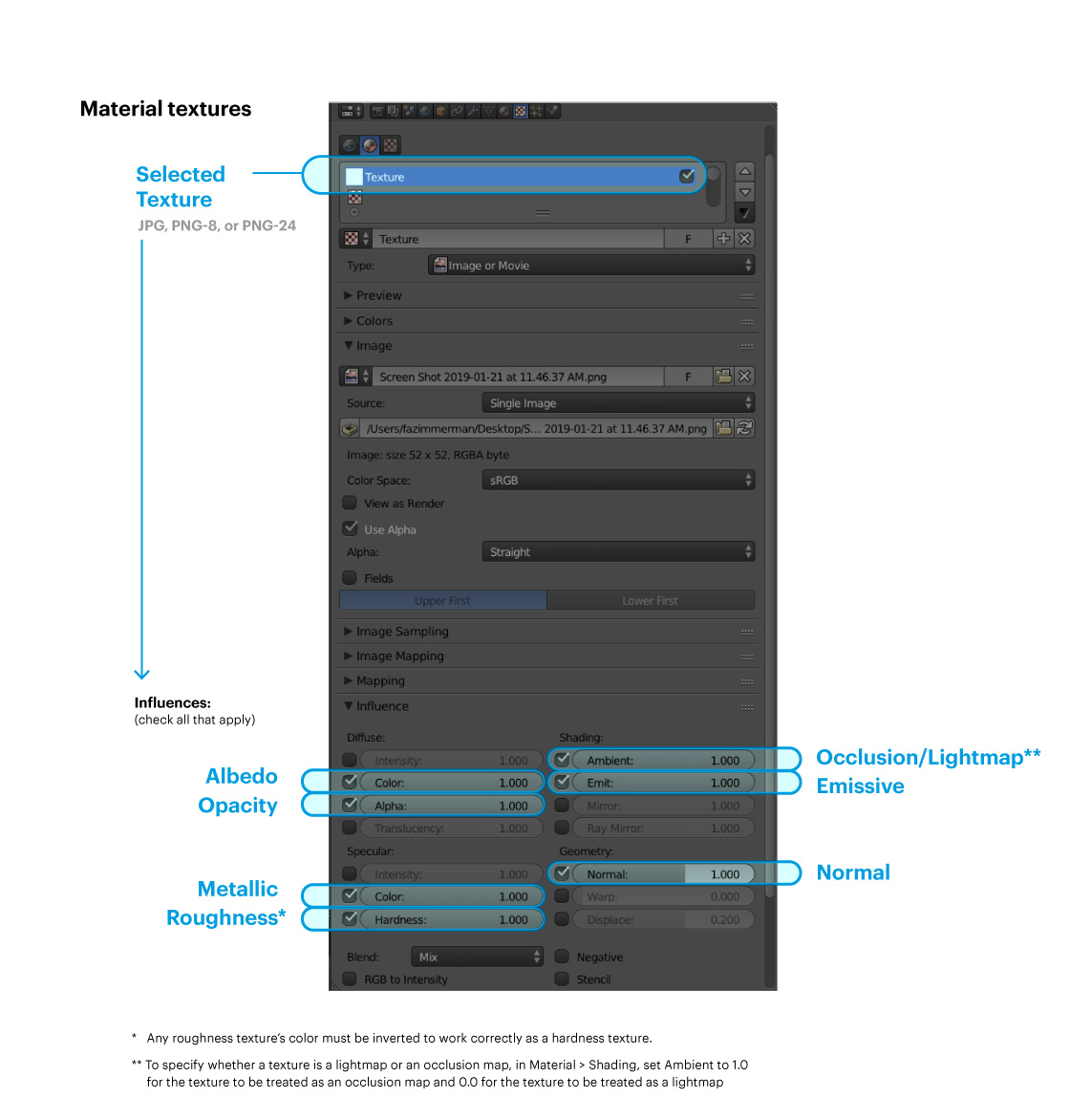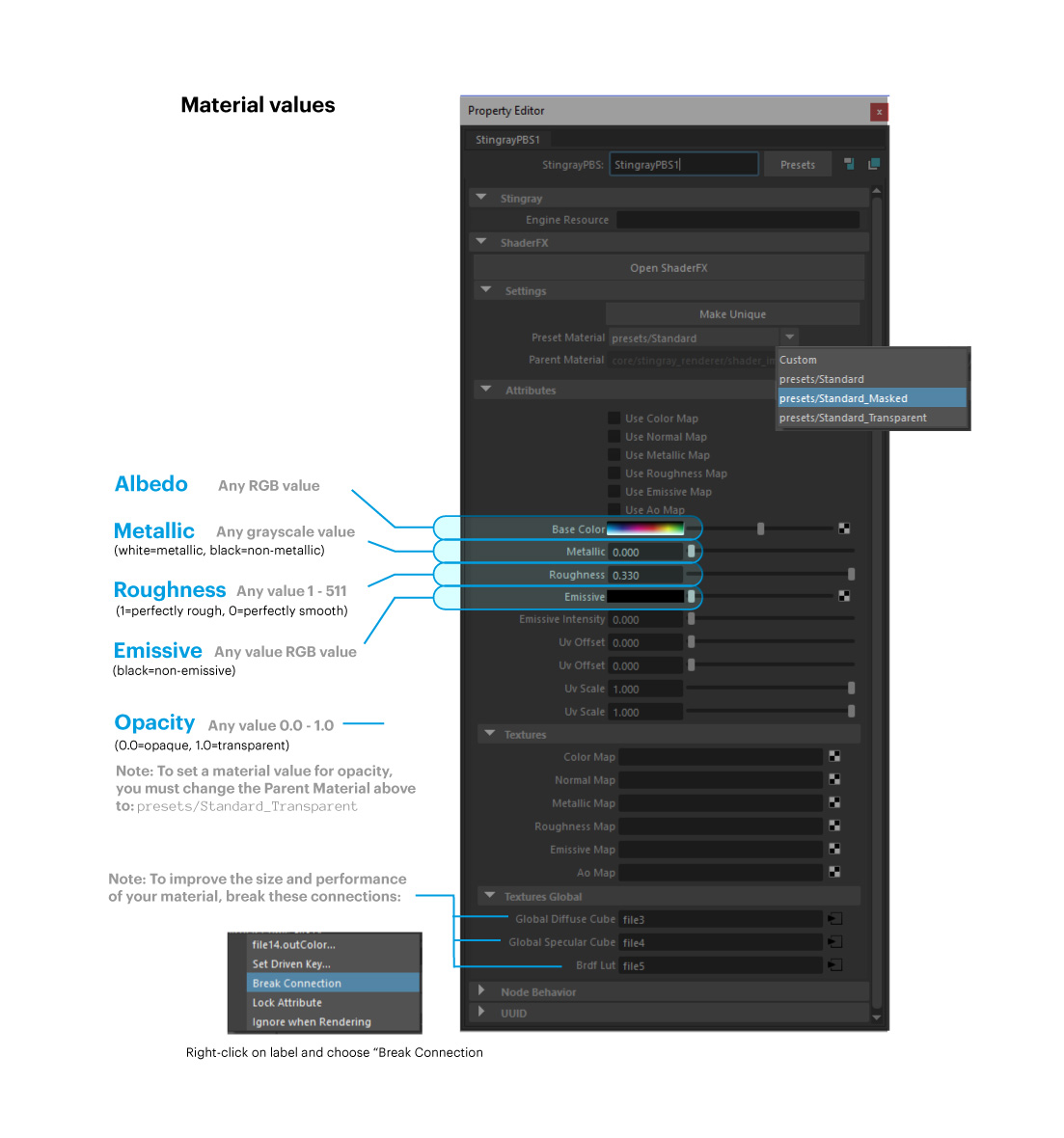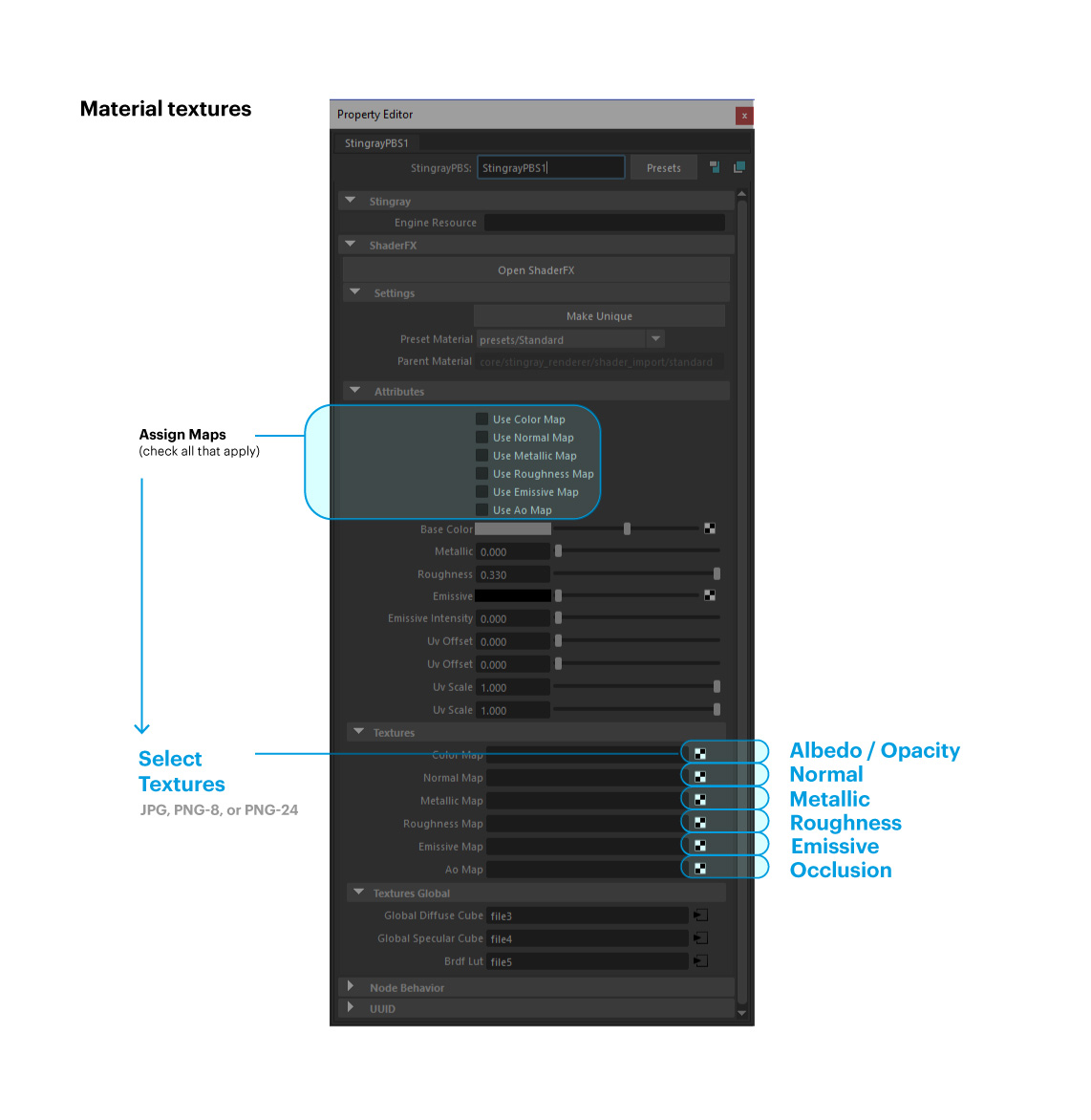Guía de materiales PBR
The appearance of a 3D model is controlled by its materials. The materials supported in Overte are physically-based rendering (PBR) materials. This means that a 3D model's materials will reflect or absorb light (approximately) like how they would in real life.
Introducción a Materiales, Texturas y Sombreado
La apariencia de un modelo 3D está controlada por sus materiales. Por ejemplo, un modelo 3D de una tecla utilizará un material que determina su color, qué tan metálico se ve y si su superficie es irregular o lisa. Un modelo 3D de una pared de ladrillos tendrá material que determina su rugosidad y color.
Since Overte supports physically-based rendering (PBR) materials, your model will behave like a real world object when exposed to light. For example, the same 3D model of a key will shine and reflect any light that falls on it. The 3D model of a brick wall will not shine, but will reflect enough light for you to observe its colors and surface.
Un material contiene información sobre la textura y el sombreado.
Texturas
Las texturas son imágenes planas que se aplican a modelos 3D. Estos agregan detalles sobre cómo se ve el material de un modelo 3D. Por ejemplo, un modelo 3D del tronco de un árbol utilizará una textura de corteza para mostrar cómo se ve la superficie.
Overte supports the use of the following texture formats:
PNG (recomendado)
JPEG, JPG (recomendado)
TGA
TIFF, TIF
For best performance, we recommend baking all 3D models (including textures) before loading them into Overte.
Sombreado
Since Overte supports PBR materials, the shading used depicts an accurate representation of a how light interacts with different material surfaces. This means that your 3D model will not look the same under different light settings. The PBR shader has a set of material parameters or channels that can be modified to create different types of materials.
Nota
Puedes combinar sombreadores con entidades de material en entidades de forma y zona para aplicar sombreadores a modelos y avatares. Esta función se lanzó como una función experimental y no se ha probado exhaustivamente. Si deseas intentar aplicar materiales procedurales a modelos o avatares bajo tu propio riesgo, puedes encontrar más información en Sombras procedurales para Modelos y Avatares.
** Canales de material **
Los canales de material determinan varios parámetros como la rugosidad o el color de un material. Puedes determinar el valor de cada canal de dos formas:
- Establecer un Valor: El valor de un canal es un valor establecido por un control deslizante. Establecer un valor es como apagar o encender un interruptor.
Por ejemplo, si miras tu teléfono, algunas partes son brillantes y otras son mate. Cuando usas un valor, todo el objeto refleja ese valor. Si quieres que diferentes partes de un objeto reflejen una rugosidad variada, deberás usar un mapa.
- Using a Map: The map is an image which you can import to define a property. You may use a map to apply a texture to your 3D model.
For instance, your phone may have a case that is matte, while the rest of your phone is shiny. You can use a map to set the case as matte and the phone as shiny.
All materials in Overte have the following channels that determine how they look:
Tipo de Canal |
Descripción |
Valor |
Mapa |
|---|---|---|---|
Albedo |
Este canal define el color del material. Puedes elegir cualquier valor de color de tu elección. |
sRGB |
sRGB |
Metallic |
This channel determines how metallic the material is. Metal refracts light different than other materials. |
[0,1] |
[0,1] |
Roughness |
This determines how rough/matte or glossy/shiny an object is. |
[0,1] |
[0,1] |
Normal |
Normal es un canal que muestra un objeto como si hubiera una geometría real. Por ejemplo, normal agregaría protuberancias y otras irregularidades a una piedra o crestas a una concha marina. |
xyz |
bump |
Opacity |
La opacidad determina si un objeto es transparente u opaco. |
[0,1] |
mask, alpha |
Occlusion |
Esta propiedad se aproxima al sombreado para que sea lo más natural posible. Esto significa que mostrará cómo los objetos interactúan con la luz. |
--- |
[0,1] |
Emissive |
This channel controls the amount of light that is coming from an object. |
sRGB |
sRGB |
Scattering |
El Scatering (Dispersión) determina cómo se comportará la luz cuando golpee la piel humana. Este canal detalla cómo la luz es reflejada o absorbida por los cuerpos humanos. |
[0,1] |
[0,1] |
Material Type |
This channel decides if an object is impacted by light. |
[lit, unlit] |
--- |
Notas:
If you set transparency with a texture, the transparency (alpha) must be in the material’s albedo texture, as a file with transparency and not as a separate transparency texture.
Overte renderer can draw two different kinds of transparency: "alpha" (255 graduates steps of transparency, no shading on surface, casts no shadows,) and "mask" (binary transparency, full shading of opaque surface, whole surface casts shadow.)
To determine whether a texture is treated as a mask or as alpha, the engine looks for alpha values between 2% and 98%.
Admitimos el uso de un segundo conjunto UV con los siguientes canales de textura solamente: Textura Emisiva (Emissive Texture), Mapa Normal (Normal Map) y Oclusión Ambiental.
Materiales de Muestra y sus Texturas y Sombreado
Overte supports different types of materials. We've created sample objects with each material type. You can download each object from this repository on GitHub, or run this script in Overte to upload all sample objects in your domain.
Hemos listado toda la información del material (incluidas las texturas, el sombreado y los valores de canal y mapas) para estos objetos de muestra aquí.
Establecer valores del Material en Blender
Advertencia
Esta sección está desactualizada.
When you create a model in Blender, you have to export it in FBX, glTF, GLB or OBJ format to use in Overte. Additionally, you have to modify material properties and textures in Blender to match the PBR material textures in Overte.
Al hacerlo, te aseguras de que tu modelo se vea como lo deseas.
Por defecto, cualquier propiedad de material establecida con una textura anulará una propiedad establecida con un valor. La única excepción a esto es en el caso del color del vértice y una textura, en cuyo caso el color del vértice y la textura se multiplicarán juntos. Esto puede resultar útil para crear modelos de colores de alto rendimiento utilizando texturas de escala de grises y colores de vértice.
We've included images where the fields corresponding to each supported PBR channel in Blender are highlighted, along with details about which values and colors correspond to the range corresponding with that channel. It should be noted that models exported as OBJ may not have full PBR material support in Overte yet.


Conjunto de Valores del Material en Maya
Advertencia
Esta sección no se ha probado en mucho tiempo y podría estar desactualizada.
Utiliza los gráficos de a continuación para establecer los valores de material y texturas correctos en Maya.


Ver también